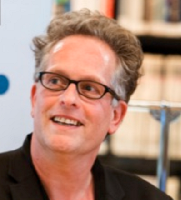Marcel Ras is the Digital Preservation Program Manager at the Dutch Digital Heritage Network
The mission of the Dutch Digital Heritage Network is to develop a system of facilities and services for improving the visibility, usability and sustainability of digital heritage. And thus lend more social added value to our digital heritage. An ambitious mission that demands a lot of collaboration and connection with the individual heritage organisations. This can only happen with the right set of instruments providing help.
Imagine you are the project manager of the Album Cover Museum, just recently digitised 10.000 LP covers from your collection. The results, 10 TB of data, are stored on a hard disk. You have Ambitious plans to digitise even more in the near future with an estimated yearly growth of 20 TB. The collection needs to be preserved and linked with other digital collections in an online exhibition about music. This brings a truck load of questions to be answered now. Too many for a little museum to answer by itself.
The questions about preservation of the digitised album covers are manyfold. What infrastructure do I need? What is the best file format for preservation? Where to store the data? What does infrastructure cost? What about legislation? What is the life-span of the file format? It is easy to see that the Album Cover Museum Project Manager needs help in order not to drown in a swamp of unresolvable questions. Luckily, dear Album Cover Museum Project Manager, help is on its way and to be found in The Big Picture Model of Digital Preservation.
The Big Picture is built upon three other models: the Preservation Policy Model which is a Dutch translation of the SCAPE preservation Policy Framework Model. The Network of Collaborative Preservation Facilities which models the infrastructural challenges. And the Dutch cost model for calculating the cost of preserving digital information. The Big Picture models these three up together as a helping aid for heritage institutes to make decisions about preserving digital collections.
Wise decision making should involve all possible viewpoints from policies to software, from calculating costs to developing workflows and from skilled staff to knowing your users.
The Big Picture model brings together most of this as a way of thinking. It models the steps towards a wise and sustainable decision in a combination of questions. Starting point is the organisational framework. Then the infrastructural and financial needs are captured. The model tells you what it means for the Album Cover Museum with few staff members and a limited budget to have the ambition to digitise album covers at a large scale, preserve them and provide access in relation to other collections. It will help the program manager and the museum to make decisions and describe clear goals in order to achieve its ambitions.
Starting with digital preservation is like a Russian Doll, you open one and another one appears, and another one and yet another one. It can be very overwhelming and can lead to paralysis as there are too many dolls and too many questions. The Big Picture Model of Digital Preservation is one of the instruments that should bring Heritage Institutes further. It is developed by the Dutch Digital Heritage Network and described in detail in the following report: "The Big Picture Model of Digital Preservation. How preservation policy, cost and infrastructure together shape long-term digital accessibility"
